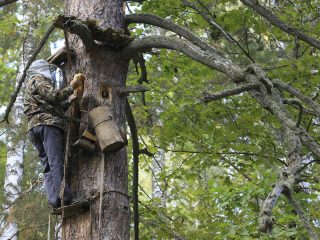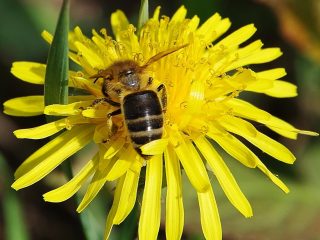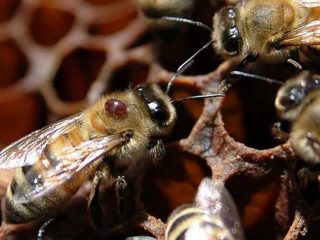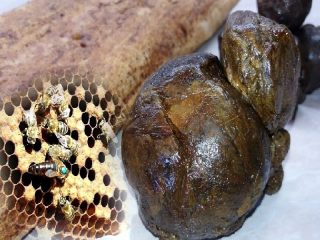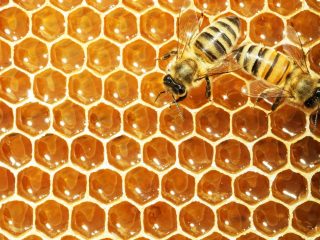Content
Honey is a natural product, the value of which for humans can hardly be overestimated. The tasty and aromatic viscous mass is used in therapy, cooking and cosmetology. Admirers of traditional medicine have different opinions about what is healthier - linden or flower honey.

Natural honey contains many valuable minerals, vitamins, enzymes and organic acids
What is the difference between flower honey and linden honey?
According to the biochemical classification, linden honey belongs to the monofloral species. The product contains predominantly pollen from one flowering plant. In addition to linden, monofloral honey includes other types of honey, in which one component predominates:
- buckwheat;
- sunflower;
- corn, etc.
Flower honey has a polyfloral composition, as bees collect nectar from forbs. Accordingly, the healing product contains pollen from many plants. Depending on the area where flowers grow, honey comes in several varieties:
- May;
- meadow;
- forest;
- mountain;
- field.
Thus, meadow honey consists of pollen from forbs typical of lowland steppes and river floodplains. This can be chamomile, thyme, sage, clover and other flowering plants.
Flower and linden honey are collected and sold almost at the same time. Only the receipt of the product taken by bees during the flowering of fragrant trees is limited in time. You can distinguish flower honey from linden honey by the degree of viscosity, color, aroma and taste.

Homemade honey is healthier than store-bought honey, since the commercially produced product is heated for long-term storage
Color
Linden honey is almost white in color with a yellowish admixture. Sometimes the product may have a slight greenish tint from honeydew. In some cases, the linden harvest has a pronounced golden-straw tone. This change indicates that it also contains a large amount of pollen. This phenomenon is especially often observed if the apiary is located next to gardening farms.
Flower products collected in places with different flora and at different times in the spring-summer season are not similar in color. It has all shades of amber: from light yellow to deep brown.
Taste
Linden honey has a pleasant taste, with pronounced sweetness. All light-colored types of apiary product cause a soft sensation in the oral cavity. The flower varieties are also fragrant and sweet, but after eating them you feel a slight tingling sensation in the throat for a while. This is most often noticeable after eating dark colored varieties.
Smell
The aroma of the product made from nectar collected from a fragrant tree is delicate and unobtrusive. When inhaled, a hint of linden blossom is clearly felt.The smell of the polyfloral collection is more pronounced, a little harsh. In the range of aromas, a certain component may clearly dominate. It depends on which flowering plant prevails in a given area.

The aroma of flower honey, obtained by mixing the odors of several plants, can be unique
Crystallization
Linden honey after pumping is a liquid, almost transparent substance. Crystallization of the product occurs slowly: the process lasts up to 6-7 months. Once candied, the linden nectar acquires the consistency of dough and its color becomes creamy.
Flower honey remains in a liquid state for varying periods of time. Changes in consistency can occur from several weeks to a year.
Which honey is healthier: linden or flower?
People include this wonderful gift of nature in their diet as a tasty and healthy delicacy. Many people eat a small amount of honey daily in order to prevent the occurrence of negative processes in the body.
Since ancient times, all peoples have considered this natural product valuable, having powerful healing properties. Honey is used in the treatment of many diseases and pathological conditions:
- acute respiratory infections;
- influenza and ARVI;
- bronchial asthma;
- inflammation of the gastrointestinal tract;
- gynecological diseases in women;
- problems of the genitourinary system in men.
The antimicrobial and anti-inflammatory effect allows honey to be used to solve problems in dermatology and cosmetology.Masks, lotions and ointments containing a healing substance promote the healing of abscesses, skin ulcers, burn wounds, improve blood circulation and restore the integrity of the epidermis.
The natural product has a lot of undeniable advantages. However, there are prohibitions on its use.
- Individual intolerance.
- Infancy and early preschool age.
- Diabetes mellitus type II.
- High degree of obesity.
Only after consulting with your supervising doctor, you can take honey for hypertension. There are restrictions on the use of the product during inflammatory processes in the pancreas.
The linden variety has high antibacterial activity. Experts in the field of apitherapy believe that in this regard the product is second only to chestnut and honeydew collected from coniferous trees. Linden itself is a well-known medicinal product that has anti-cold and anti-inflammatory effects. In combination with goat milk, the product is considered a panacea for various forms of tuberculosis.
Flower honey also has a rich composition. The fragrant product is famous as a general tonic and is often used to prevent colds, various metabolic disorders, and decreased mental activity. It is also used to improve immunity, including in children and adolescents. The flower collection is recommended for use in cases of vitamin deficiency.

To avoid harm to the body, sweet products should be consumed in limited quantities.
Which one is better to choose?
When choosing a variety, you should proceed from the purpose for which the beekeeping product will be used. If you intend to use it as a delicacy or for preparing culinary products (kozinaki, pastries, cakes, etc.), then you can purchase the type that your household prefers.
When honey is purchased for medicinal purposes, the varietal qualities of the product should be taken into account. Linden is best used for colds and inflammatory processes in the body. It is worth choosing flowers if you are physically or nervously exhausted.
Conclusion
When deciding whether to choose flower or linden honey, you must evaluate for what purpose the purchase is being made. Both types are tasty and healthy, so they can be used as a treat or culinary ingredient without restrictions. To solve health problems, it is necessary to clarify what healing qualities each variety has.

